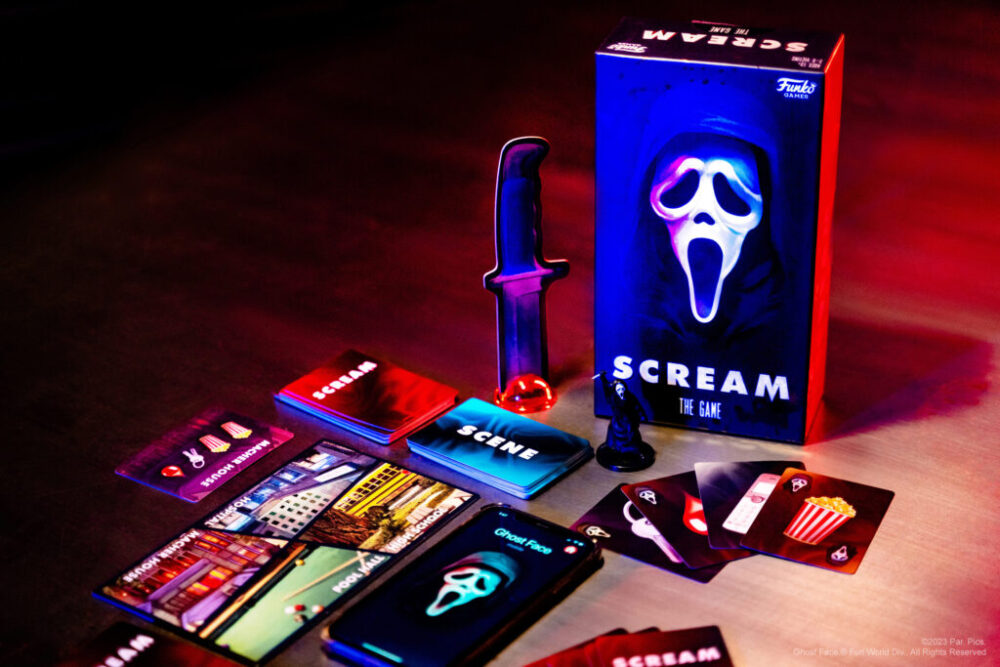Officially licensed board games are in no way a new concept. Back in the 1930s, families could enjoy Walt Disney’s Own Game —Snow White and the 7 Dwarfs, a Parker Bros. game featuring art from Disney’s first full-length animated feature. When the first Star Wars movie hit the big screen in 1977, kids could re-create the main action of the movie and avoid death by trash compactor in Kenner’s Star Wars Escape from the Death Star game.
But over the past decade, licensed games have developed into a much more serious business, with companies including Funko Games (Prospero Hall), Ravensburger, The Op Games | Usaopoly, and Asmodee releasing dozens of licensed games per year. These tabletop adventures appeal to gamers of all ages, sometimes retelling familiar stories and other times giving fans the chance to create their own adventures in a beloved fictional world.
And creating these games is a complex process. We talked to game designers and manufacturers to take an in-depth look at the work it takes to bring your favorite fandoms to the tabletop and what makes a licensed game a winner.
BEHIND THE BOARD GAME
Board games, trading card games, role-playing games, and other tabletop titles featuring your favorite characters or fictional worlds don’t just appear on store shelves like magic. It takes dozens of people, legal contracts, and often years of work to get an official game ready for your next game night.
But why add the extra step of getting permission to use existing intellectual property (IP) instead of creating an original game? According to Lysa Penrose, head of new games marketing at Ravensburger North America, an established brand can be a gateway for getting a wider audience.
“Licenses are a wonderful opportunity to grow our beloved hobby and community,” she says. “Fans who might not otherwise discover the magic of tabletop games are open to try out products that feature their favorite stories and characters.”
The process for creating an officially licensed game certainly varies by company and by game type. But generally, the process involves research, development, working with the company that owns the IP, and a lot of trial and error.
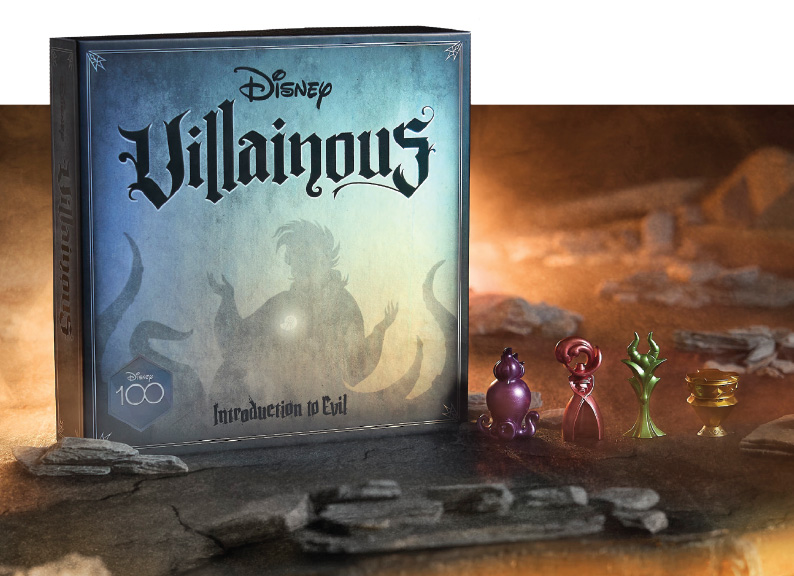
For example, the design team behind Ravensburger’s popular Villainous board game franchise — in which players take on the role of infamous villains from Disney, Marvel, and Star Wars stories — always starts by asking the question “Who is our compelling headliner or cover character?” According to Mike Mulvihill, Ravensburger North America’s game development manager for Disney Villainous, the team keeps a running list of potential characters who may fit the bill. For a larger Villainous game, the team also chooses other characters to appear in the set.
Then, the licensor, or brand owner, approves the team’s initial plans for that game before development can start. Mulvihill notes that the process becomes a bit more complicated for Marvel and Star Wars. These villains’ paths often intertwine and tie into a larger story arc, while Disney villains typically come from self-contained stories.
With feedback from the licensor, the developers start creating the game. This stage includes selecting the locations featured in the game, creating game mechanics and cards, and creating original art. One fun fact Mulvihill shares about the Villainous games is that the team will only select locations that the villain actually visits on screen.
“For instance, with Lady Tremaine, we never show the kitchen or fountain because she is never seen in those locations,” he says, “even though they mean so much to Cinderella the movie and are classic locations.”
Once the game mechanics are in place, the developers move into a testing phase, during which the team rewrites and revises the game until it goes to print. Meanwhile, the games’ visual components go through their own creative process, led by Art Director Jake Breish and Graphic Designer Chris Buckley. All of the cards, for example, feature original art that the licensor must approve.
“Every card is a painting, so they have a longer and more direct licensor approval process to ensure our designs live up to the standard of the IP holder,” Mulvihill says. “We’re not just talking about card art paintings here either — all elements of the game, from the back of the card to tokens, go through this approval process.”
The same applies to the sculpted game movers, which are a hallmark of the Villainous line. According to Mulvihill, the art team will start by sketching 20 or so ideas for each character’s mover, ultimately narrowing it down to two or three options to show the licensor.
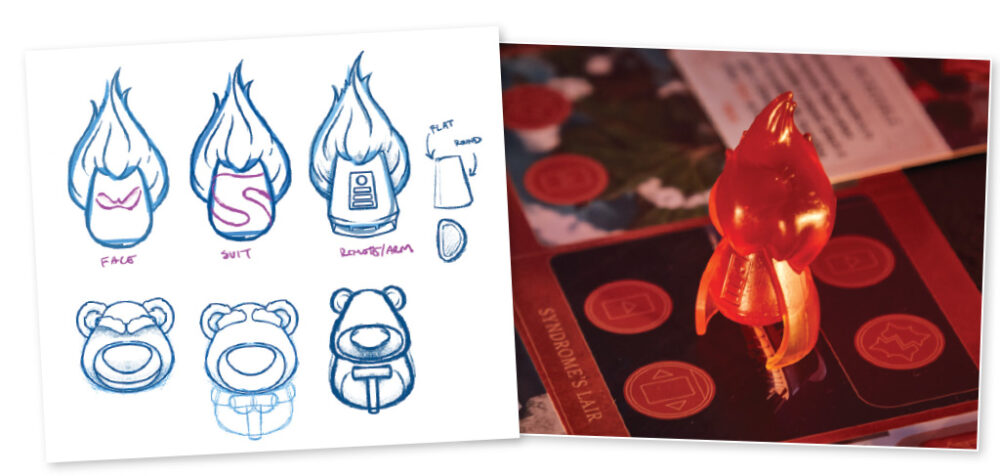
NOT ALL FUN AND GAMES
When bringing a game idea to fruition, there can be challenges in translating the source material. Veteran game designer Scott Rogers explains that one of the hardest decisions to make is how to convey information. In a video game or movie, the audience passively receives information from visuals. For a tabletop game, it’s less straightforward.
“Do you get a little book on the side where the adventure is? Do you get information card by card? Is there some sort of mechanism that tells the story?” he says. “In my opinion, the most challenging part is just that you have this embarrassment of riches. Which ones are the best ones?”
Another challenge, according to Rogers, is that licensors give game designers varied access to the source material. He has had some provide next to nothing, while others give open access to scripts, concept art, future storylines, and creatives. Ultimately, the quality of this partnership can be what makes a licensed board game great.
“The game becomes so much more rich when you share the fiction or you share the likeness rights or you share anything that it takes to create that thing,” he explains. “You have to invite [the game designer] into your house and share with them. And that way you’re going to get a superior product.”
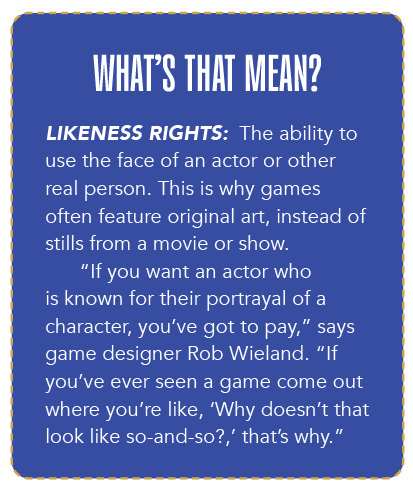
THESE DAYS, IT’S ABOUT MORE THAN STICKER-SLAPPING
Alien may be one of the most well-known sci-fi movies of all time, but — believe it or not — the 1979 film has only been made into a board game twice. The first game came out the same year as the movie, while the second came out in 2021. Called Fate of the Nostromo and designed by Rogers, this later adaptation was a far cry from the original.
According to Rogers, the first Alien-branded game was a simple roll-and-move setup. “The theme is just slapped on, there are maybe four images from stills of the movie and there are like four movers of the alien running around that are red, blue, yellow, and green,” he recalls. But there are no red aliens in Rogers’ game. Instead, players take on the role of a crew member, cooperatively using strategy and specific, character-inspired abilities to escape the ship.
The expectations for tabletop games inspired by movies, shows, and board games have vastly expanded as fans have matured. “I didn’t approach it just as a game designer trying to make a commercial product,” Rogers says. “I approached it as a fan thinking, ‘What do I want to see in this game?’”
Overall, those in the tabletop business seem to agree that modern fans want more out of their pop culture-inspired games.
“Players are really looking for an immersive experience that feels like they’ve been transported to the worlds they know and love,” says Steve Werner, game design manager for Ravensburger North America. “Adding a name and image to any game won’t — and shouldn’t — cut it.”
— Scott Rogers, game designer
“You have to invite [the game designer] into your house and share with them. And that way you’re going to get a superior product.”
But what exactly does that look like? Generally, it means being as detailed as possible and finding a story to tell with the game. It means adding game mechanisms and elements that make sense for that specific brand alone.
As companies get more creative with their licensed tabletop game offerings, this can also mean developing games based on niche, out-of-the-box IP. Maestro Media, for example, has developed tabletop games based on two independent video games: The Binding of Isaac and Sally Face. Both titles launched on Kickstarter, shattering their respective funding goals.
“A lot of people go for the biggest IP, and a lot of times that’s not really the way to go,” says Maesro Media CEO Javon Frazier. “It’s about the creator who has the most passion for their fans and an audience that’s really passionate for the creator.”
Funko Games (Prospero Hall) has also launched games inspired by more surprising IPs, including a Rear Window game. Deirdre Cross, general manager of emerging brands at Funko Games, says party games and technology integration are two trends she’s excited about in the tabletop space. Both play out in the company’s new Scream Party Game, another unexpected adaptation, which includes an app featuring the voice of Rodger L. Jackson, aka Ghostface.
Overall, storytelling through tabletop games is becoming more mainstream, Ravensburger’s Penrose says.
“It’s almost jarring to meet someone outside our bubble,” she says. “I’m excited for more immersive board games, so more potential gamers get to experience the power of storytelling. One of us!”
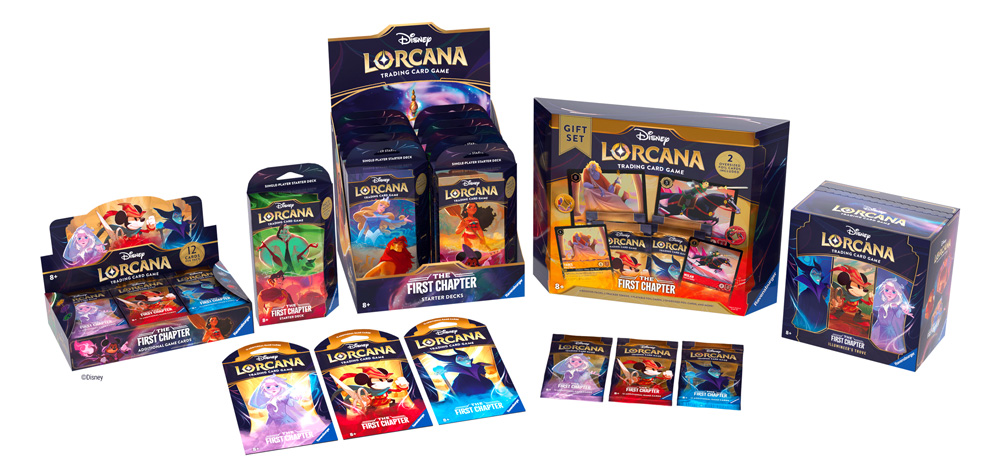
STRATEGY SESSION: MAKING DISNEY LORCANA
One of the biggest titles to talk about this year is Disney Lorcana, a new trading card game (TCG) from Ravensburger that features a variety of Disney characters and original artwork. According to Steve Werner, game design manager at Ravensburger North America and co-designer of Lorcana, the team created the game by starting with an existing character or item and building from there. He cites the Scar — Mastermind card as an example.
“Everyone who’s seen Disney’s The Lion King knows Scar is great at setting up a plan, but doesn’t get his own paws dirty,” Werner says. “From there, we developed that card so that his skill was one that removed strength from an opponent just for having Scar on the board. This ability feels very natural for how Scar would act, and works well with our mechanics. We call this type of design the ‘top down,’ and it was applied across Disney Lorcana.”
Werner says this game was designed with both new and experienced TCG players in mind. “We wanted to ensure that Disney Lorcana was easily accessible, but also super fun for even the most strategic gaming minds.”
While Disney Lorcana features a slate of characters that will be familiar to Disney fans, the Ravensburger team created additional layers of storytelling and introduced new visuals. The creative team has more than 100 years of combined experience designing trading card games and an expansive knowledge of Disney lore.
Disney Lorcana will have limited availability at GenCon before officially debuting in local game stores and Disney Parks on Aug. 18, with a wide release to follow on Sept. 1. The first wave, called “The First Chapter,” will include more than 200 game cards, along with themed accessories.
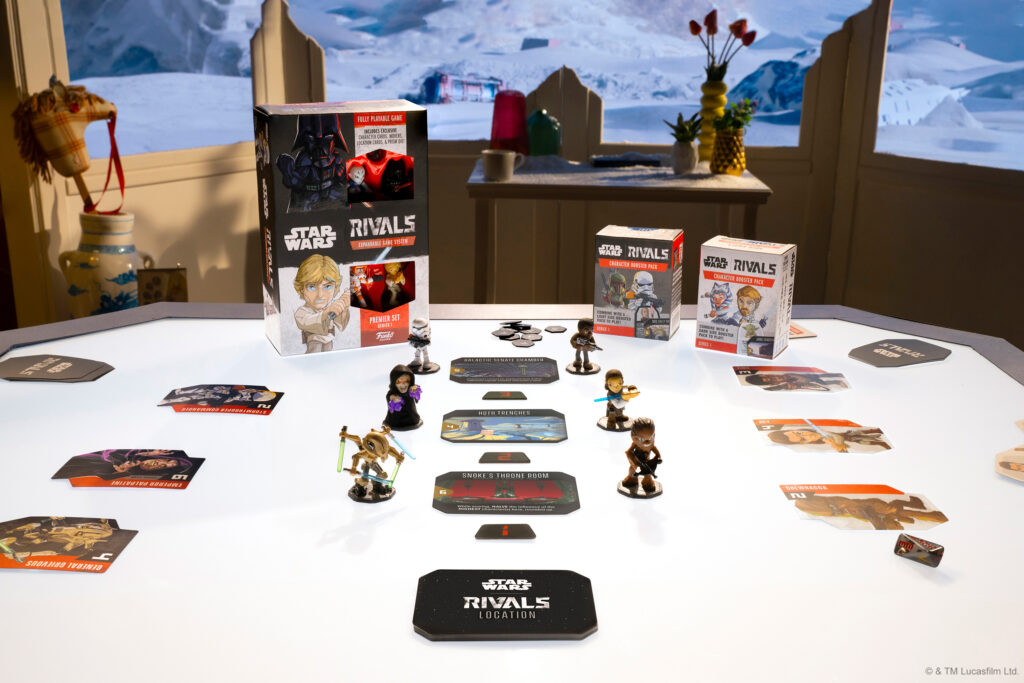
STRATEGY SESSION: MAKING STAR WARS RIVALS —EXPANDABLE GAME SYSTEM
Back in April, Funko Games revealed its plan to release Star Wars Rivals, a collectible and expandable tabletop gaming experience set in the Star Wars universe. In addition to cards, this game utilizes miniature sculpts of Star Wars characters, which Funko Games’ General Manager of Emerging Brands Deirdre Cross cites as her favorite feature of the game. “We’re a division of Funko, so you know it will be cool,” she says. “But these are delightful in their poses, paint deco, and overall stylization. They really bring out the attitude of your favorite characters.”
According to Cross, the Funko Games team worked closely with Lucasfilm while developing this game, which also features new art. “When creating a tabletop game based on an IP, it’s essential to understand and appreciate the essence of the IP, integrating it into the gameplay, narrative, and components,” she says. Star Wars Rivals is available now at Walmart, with a wider release coming later this year.
This article was originally published in Issue No. 17 of The Pop Insider. Click here to read the full issue!

